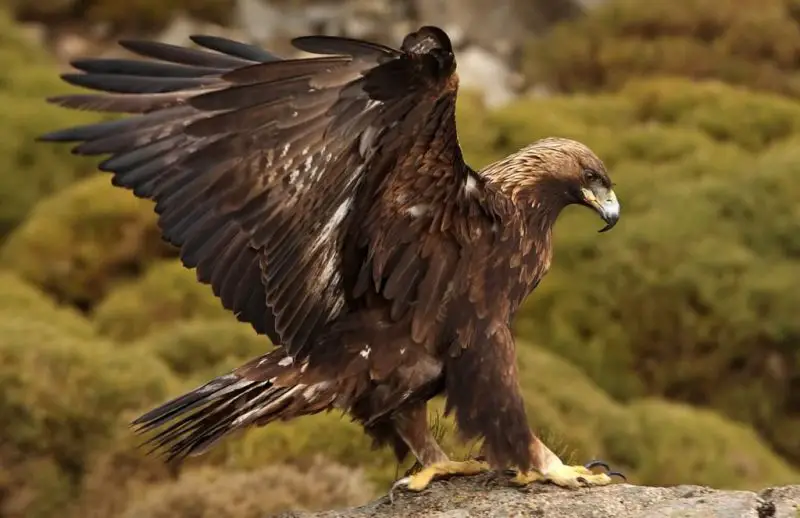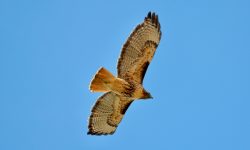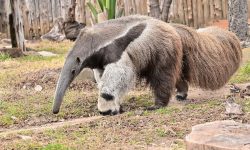Majestic, commanding, and revered across cultures, the eagle is more than just a bird—it is a symbol of strength, freedom, and precision. Whether it’s the soaring Golden Eagle over alpine ridges or the Bald Eagle guarding North American rivers, these birds of prey possess a life cycle as powerful as their image suggests. From a delicate egg hidden high in a nest to a fierce predator ruling the open sky, the eagle’s journey is one of determination, transformation, and survival. Understanding the eagle life cycle reveals not only how these birds grow but how they rise to become rulers of the skies.

The Life Cycle of an Eagle
Courtship and Mating Rituals
The eagle’s life cycle begins not on land, but in the air—where courtship takes the form of a dramatic aerial ballet. These displays are not just visual spectacles; they are finely tuned demonstrations of strength, agility, and reproductive fitness. Male and female eagles engage in synchronized flights that include high-speed chases, powerful climbs, and breathtaking stoops that showcase their aerial mastery. One of the most iconic behaviors is talon clasping, in which the pair lock claws mid-air and spiral downward in a controlled free-fall before releasing—an act that tests both coordination and trust.
These ritualized flights serve multiple purposes. They strengthen pair bonds, assess compatibility, and ward off rival suitors. For many eagle species, including the Bald Eagle and Golden Eagle, monogamy is lifelong—a rare trait in the avian world. Once a pair has formed, the commitment extends not just to mating, but to nesting site fidelity. Eagles often return to the same nest year after year, improving and expanding it across seasons.
Nesting sites are chosen with precision. Pairs seek out high, secluded locations—towering trees, rocky cliff ledges, or isolated man-made structures—where they can build massive nests (eyries) safe from ground predators and with a commanding view of surrounding hunting grounds. The selection of such sites is as much a part of courtship as the flight rituals themselves, laying the foundation—both literally and symbolically—for the next generation of sky kings.
Nest Building and Egg Laying
Following their powerful courtship displays, mated eagle pairs turn their attention to one of the most ambitious architectural projects in the avian world: building the nest, or eyrie. These colossal structures reflect not only the birds’ strength but their devotion to raising young in the safest, most stable environment possible.
Using large sticks as the foundation, the pair weaves in grasses, mosses, lichens, and soft plant fibers to line the inner chamber. Some eyries—especially those reused and added to over several years—can reach over 2 meters (6.5 feet) in diameter and weigh up to a ton. Constructed high above ground in tall trees, cliffs, or elevated platforms, the nest provides insulation, protection from predators, and a commanding view of the surrounding territory.
Once the nest is complete, the female lays one to three oval, pale eggs, spaced a few days apart. These eggs are carefully cradled in the center of the eyrie and kept warm through constant incubation, lasting between 35 and 45 days, depending on the eagle species and local climate.
Though both parents may take turns, the female typically performs the majority of the brooding—nestled over the eggs with outstretched wings to regulate temperature and humidity. The male plays a crucial support role, delivering food to the nest and standing guard nearby to defend against intruders or scavengers. This shared responsibility reflects the strength of the eagle pair bond, ensuring that from the very beginning, the developing chicks are nurtured with extraordinary care and commitment.
Hatching and Early Development
The moment of hatching marks a dramatic entrance into the world for the eaglet—a fragile, sightless, and featherless being, entirely reliant on its parents for warmth, food, and protection. With closed eyes and uncoordinated movements, the newly hatched chick emits soft peeps, signaling its need for constant attention.
In many eagle species, eggs hatch asynchronously—often days apart—giving the first-born chick a distinct developmental advantage. This head start can lead to intense sibling rivalry, especially when food is scarce. The stronger chick may dominate feedings, suppress the younger’s growth, or in extreme cases, commit siblicide, forcing its sibling out of the nest or pecking it to death. Though harsh, this behavior reflects a survival strategy: in lean years, resources are channeled to the offspring most likely to thrive.
During the first two weeks of life, eaglets grow at an astonishing rate—doubling their size and increasing in weight daily. Their once-soft beaks and talons begin to harden, preparing for future hunting, while their skin becomes covered in thick, white down. The parents maintain a constant supply of high-protein prey, including freshly caught fish, birds, or small mammals. The adults tear the food into small, manageable pieces and gently place them into the open mouths of the chicks.
By the fifth week, wing-flapping begins—a critical developmental milestone that signals the eaglet’s transition from fragile nestling to active learner. These early exercises help build wing and chest muscles essential for flight. Juvenile feathers slowly replace down, and the chicks become increasingly alert, curious, and engaged with their surroundings. Though still unable to leave the nest, they are already preparing for the next phase: learning to fly.
Fledging: First Flights and Independence
Around 10 to 14 weeks of age, the young eagle reaches a critical milestone: fledging. What begins as uncertain, fluttering hops along the edge of the nest soon becomes the eaglet’s first true leap into the sky. These initial flights are often awkward and brief—short glides to nearby branches or wobbly landings on unsteady perches—but they mark the start of a new phase of independence.
Despite leaving the nest, juvenile eagles do not sever ties with their parents immediately. For several weeks to months after fledging, they remain within the vicinity of the nest site. During this transitional period, the adults continue to provide food and offer silent guidance. The young birds watch, mimic, and eventually begin practicing essential survival skills, including mid-air maneuvering, perching securely, and handling prey with their developing talons.
As confidence grows, juveniles begin to explore increasingly larger areas, soaring over rivers, forests, and fields. They engage in playful chases, attempt clumsy stoops, and test their reactions to moving objects—each activity fine-tuning the reflexes needed for solo hunting. Though their instincts are strong, experience is their greatest teacher, and each successful catch marks a step closer to true independence.
By the end of the fledgling stage, the young eagle is fully flight-capable and capable of feeding itself, but it still lacks the strength, precision, and mature judgment of an adult. The journey from fledging to mastery of the sky will require time, endurance, and continuous learning—an essential apprenticeship before claiming territory or seeking a mate.
Maturation and Adulthood
Following their first year on the wing, young eagles enter a long period of transformation—physically, behaviorally, and socially. During this juvenile stage, they roam widely, often traveling hundreds or even thousands of kilometers in search of food-rich habitats, safe roosts, and learning opportunities. Though independent, they are still a long way from becoming full-fledged rulers of the sky.
Visually, juvenile eagles are distinct from adults. They wear a cloak of mottled brown and white feathers, lacking the crisp, iconic markings of maturity. For example, young Bald Eagles show no trace of the signature white head and tail until around their fifth year, when the pigmentation gradually settles into its final form. Likewise, the golden sheen on a Golden Eagle’s crown intensifies with age, a visual signal of rising status and readiness to reproduce.
Over the course of four to five years, this plumage shift reflects not just age, but a gradual assumption of dominance. As they gain strength, experience, and confidence, juveniles improve their hunting techniques—transitioning from scavenging or failed stoops to precision strikes. Their eyes, already some of the sharpest in the animal kingdom, refine depth perception and motion tracking, making them lethal from great distances.
Sexual maturity is typically reached between four and six years, at which point the eagle is ready to claim territory and find a lifelong mate. This marks the final transition into adulthood—when instinct turns to action, and the eagle begins to perform the same aerial displays, nest-building rituals, and parental duties it once witnessed from its own mother and father.
As adults, eagles are nothing short of apex aerial predators. With wingspans reaching over two meters, powerful talons capable of crushing prey, and binocular vision eight times sharper than a human’s, they command the ecosystems they inhabit. Their presence atop the food chain reflects not just raw strength, but the culmination of years of survival, learning, and transformation—an evolutionary masterpiece built for the skies.
Longevity and Lifespan
Though the eagle’s life is marked by constant challenges, those who survive to adulthood often enjoy impressive longevity. In the wild, most eagles live between 15 and 30 years, though their true potential lifespan can extend far beyond. In captivity or highly protected environments—where food is abundant and threats are minimized—some individuals have been documented to live more than 40 years, a remarkable achievement for a bird of such high energy and predatory demand.
However, reaching such ages in the wild is far from guaranteed. Survivorship is tightly linked to environmental stability. Eagles require vast, undisturbed territories rich in prey and suitable nesting sites. Habitat destruction—through deforestation, urban expansion, and wetland drainage—can shrink or fragment these critical resources, leading to increased competition and reduced breeding success.
Modern threats compound these challenges. Electrocution from power lines, collisions with wind turbines, and secondary poisoning from contaminated prey (such as lead bullets or rodenticides) claim the lives of many eagles annually. Even in protected reserves, eagles are not immune to human influence: illegal shooting, pesticide drift, and disturbances during nesting season can all take a toll.
Still, eagles have evolved to withstand harsh realities. Their delayed maturation, low reproductive rate, and territorial behavior are balanced by a long lifespan strategy—they invest heavily in few offspring, but nurture them with care and intelligence. When given the space and resources they need, eagles not only survive but thrive, serving as powerful indicators of ecosystem health and the lasting value of conservation.
Conclusion: A Legacy of Strength and Survival
The eagle’s life cycle unfolds as a breathtaking journey—one shaped by danger, discipline, and instinctive mastery of the air. From the fragile moment of hatching in a wind-swept nest to the commanding presence of an adult soaring across mountaintops or rivers, each phase reveals nature’s remarkable investment in power and precision. Nesting, fledging, hunting, and mating are not merely biological milestones; they are tests of endurance in a world where only the most adaptive and resilient survive.
Despite high infant mortality, environmental threats, and increasing human encroachment, eagles persist. They do so not only through physical strength, but through evolutionary strategy—investing in longevity, developing slowly but deeply, and anchoring themselves to landscapes that sustain life over generations. Their survival speaks to the enduring balance between wild instinct and environmental opportunity.
As each new eagle spreads its wings for the first time, it joins a lineage that has ruled the skies for millennia. The eagle’s legacy is not simply one of survival—it is a symbol of wild majesty, of vision elevated above all, and of power bound to freedom. Wherever eagles soar, they carry with them the story of nature’s most awe-inspiring transformation—from hatchling to sky king.






